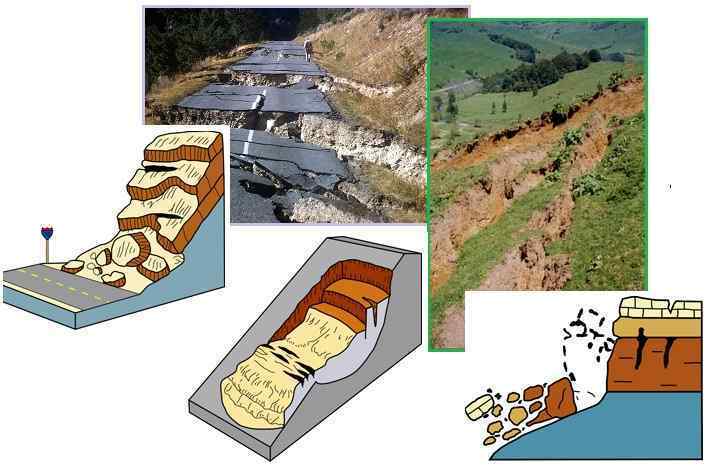

"The causes of landslides are not a mystery to mankind. Layers of rock and soil such that rain running along a clay or rock layer can create a slippery surface for the weight of the layers above it is a common cause. A rock jumble from previous mountain building, broken or fractured rock easily dislodged. We have stated that the earthquakes man experiences between the periodic passages of Planet X can be considered aftershocks from the last passage, and this is true of landslides also. Mountain building rumples the landscape, so the land is not flat but has steep ravines and hill sides. Older mountain ranges are recognized for their rounded or smoothed appearance, because of frequent landslides distributing the rubble.
"As we approach another passage, another Pole Shift, the pace of landslides has picked up. Why would this be? Plates under pressure will put pressure on regions that contain rumpled hillsides and deep ravines, as these give more readily than strictly flat land, thus act as a weak link. In addition, due to the wobble, the weather has gotten more extreme, with drought and deluge increasing in extremes. Dry ground, suddenly flooded with rainwater needing to seek its level as runoff, will create internal water slides between the rock and soil layers that constitute the rumpled hillsides. Is there an early warning system that mankind could use? The trembles that soil about to slide emits could be detected, yes. These are not earthquakes, and have their own frequency. "
ZetaTalk Chat Q&A: March 22, 2014


 The aftermath of a recent landslide in Quang Ngai Province Friday. Photo courtesy of VnExpress
The aftermath of a recent landslide in Quang Ngai Province Friday. Photo courtesy of VnExpress Buried alive: Rescuers search for buried workers Thursday evening after a landslide on a road engulfed five construction workers in Yurihonjo, Akita Prefecture. | KYODO
Buried alive: Rescuers search for buried workers Thursday evening after a landslide on a road engulfed five construction workers in Yurihonjo, Akita Prefecture. | KYODO
You need to be a member of Earth Changes and the Pole Shift to add comments!
Join Earth Changes and the Pole Shift